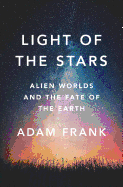
The discovery of thousands of exoplanets in the last two decades has confirmed Earth's status as just one orbital body in a crowded cosmos. Prior to this flood of planets spotted around other stars, our solar system, for all astronomy could prove, was thought to be unique. Now we know that is far from the case. Extrapolating these finds to a galactic level means that there are billions upon billions of Earth-like worlds around us, which points the hunt for alien life in exciting new directions.
In 1961, astrophysicist Frank Drake created a probability equation to determine the number of technologically advanced civilizations in the Milky Way. Many of the Drake equation's variables could not be answered at the time, such as the fraction of formed stars that have planets. Others, like the fraction of those planets that actually develop life, still cannot be solved. However, according to astronomer Adam Frank, recent breakthroughs in exoplanet detection have filled in enough variables of Drake's equation to provide startling answers.
Light of the Stars: Alien Worlds and the Fate of the Earth uses what we know for sure about our planet, other bodies in our solar system and exoplanets to reach some solid and sobering conclusions: there have been technologically advanced civilizations elsewhere in the universe. The final variable in Drake's problem remains: how long an advanced civilization survives. While Frank can't speculate on sociological trends on alien worlds, observations on Earth, especially our descent into the Anthopocene--a new geological era defined by manmade climate change--have potentially grim implications for life in the universe. Light of the Stars is a fascinating, multi-disciplined approach to the most pressing questions on Earth and beyond. --Tobias Mutter, freelance reviewer

